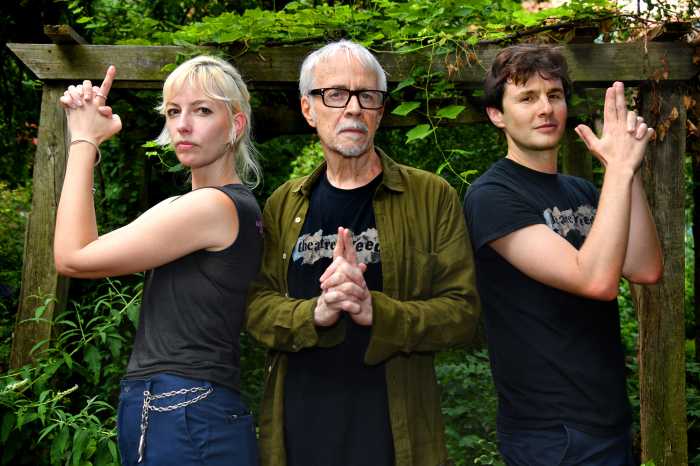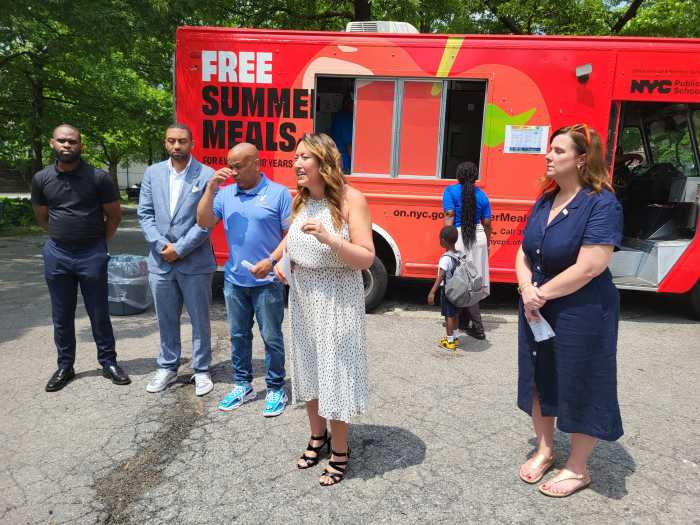By Audrey Tempelsman
Though Washington Square Park users are eager for improved public restrooms, the Parks Department renovation plan poo-poos popular sentiment.
The most dramatic elements of the renovation plan will occur in the first phase of the $16 million project, which includes installation of an almost 4-foot-high fence around the park’s perimeter; the reduction of the inner fountain circle; the leveling of the sunken plaza; and the fountain’s relocation and alignment with the arch.
The second phase will tackle the eastern half of the park, while a third phase is reserved for the restoration of utility buildings, including the bathrooms.
Parks originally said the redesign would take up to two years, during which the western and eastern halves of Washington Square Park would close alternately.
The timing of the bathroom renovation, however, remains uncertain. Though Parks plans to completely reconstruct the bathroom house, it has not yet determined whether this project will take place in phase two or three, according to Cristina DeLuca, a Parks spokesperson.
“The bathroom renovation will take place in a future phase, once phase one is completed,” she said. “It’s hard to put a timetable on it because it’s dependent on when we finish phase one.”
Jonathan Greenberg, leader of the Open Washington Square Park Coalition and a plaintiff in two lawsuits against the city regarding the renovation project, believes that Parks is trying to wash its hands of the restroom issue by stalling.
According to Greenberg, six months ago, at a Washington Square Park Task Force meeting, Parks indicated that phases one and two might drain the resources of phase three. Parks representatives then suggested that the community consider raising its own money for the bathrooms’ renovation, according to Greenberg.
However, these claims by Greenberg, DeLuca asserts, are “absolutely untrue.” Parks has already allocated money for the bathroom renovation, she said.
Nevertheless, Parks has remained tight-lipped about projects that fall outside of phase one, and will not discuss the restroom reconstruction’s timeline or cost estimates.
Greenberg says that by continually “pushing off phase three,” Parks is “sending the message that ‘We’re not interested in what you think is important.’ Talk to anyone in the park and you’ll see that bathrooms are the thing people want improved,” Greenberg said.
Data collected over the past two years indicates that Washington Square Park visitors agree with Greenberg. Of the 306 parkgoers polled by the Open Washington Square Park Coalition in fall 2005, 85 percent wanted the restrooms upgraded “as soon as possible.”
A study conducted by the Project for Public Spaces in 2005 found that restroom renovation topped respondents’ wish lists.
The P.P.S. report concluded that in the bathroom’s current condition, parkgoers’ safety was at stake.
“Negative activity dominates here [in the restrooms], especially at night. And despite their proximity to park administration buildings and the dog run, the restrooms are probably the least safe part of the park,” the report stated.
The public restrooms are located on the park’s south side, in a small, red-brick building.
On a recent Sunday afternoon, a powerful stench emanated from the men’s facility, inspiring hesitation at the threshold. Later, a homeless man, his cart of belongings parked outside the stalls, washed his upper body at one of the sinks.
George Martin, a musician who was visiting the park Sunday afternoon, admitted that the Parks Department could “keep the bathrooms a little cleaner.”
“A little?” added his friend Steve Scott.
Martin then acknowledged that in the more than the 30 years that he’s visited the park, the men’s bathroom has remained in a consistently sorry state.
“You just gotta hold your breath and go in and out,” he said.
In the women’s room, two stalls had been locked from the inside. Of the six remaining stalls, one’s door would not close, while three had no toilet paper. Sanitary napkin dispensers on two metal dividers were missing, leaving four stalls partially exposed to one another.
In all, only two out of eight toilets offered full amenities and privacy — hardly enough, it would seem, for the droves of people who frequent the park each day. The next afternoon, yet another stall was out of order.
Perhaps more surprising in this day and age is that neither facility is compliant with Americans With Disabilities Act accessibility guidelines.
The ramp ways leading to the men’s and women’s restrooms are so narrow that only those in very small wheelchairs can traffic them, said Füsun Ateser, a wheelchair user and member of Disabled In Action, a civil rights organization advocating for individuals with disabilities.
In addition, the sharp turn at the top of the ramp ways, as well as the narrow corridors within each restroom, are extremely difficult — and, for many wheelchair users, impossible — to navigate. In both restrooms, the sinks sit atop concrete blocks, leaving no room for a wheelchair to pull up under the sink.
In the women’s facility, the single disabled-access stall is not big enough to accommodate a wheelchair.
“If you try to use the stall, you’re out in the open, half in and half out,” said Ateser. Additionally, there is no grab bar in the stall to assist those who need to transfer from their wheelchair to the toilet.
In the men’s room, all the stalls are open. Bob Gormley, Community Board 2’s district manager — who noted he had visited the park’s bathroom on Tuesday morning — said the lack of dividers “seems particularly violative of the privacy of someone for whom merely sitting on a toilet seat involves a significant effort.”
There are also no diaper-changing tables for the many parents who bring their young children to the park.
“Health and safety issues should be first on the list when you’re spending millions of dollars on a park renovation,” said Ateser. “For them to say, ‘Oh, we’ll get to it, if we get to it, depending on the finances,’ is an insult.”
For others, the bathroom’s condition is simply an embarrassment.
“A lot of people visiting the city from other countries come here,” said Blanche Montgomery, who was walking her dog in Washington Square on Sunday. “They shouldn’t see our park like this.”





































